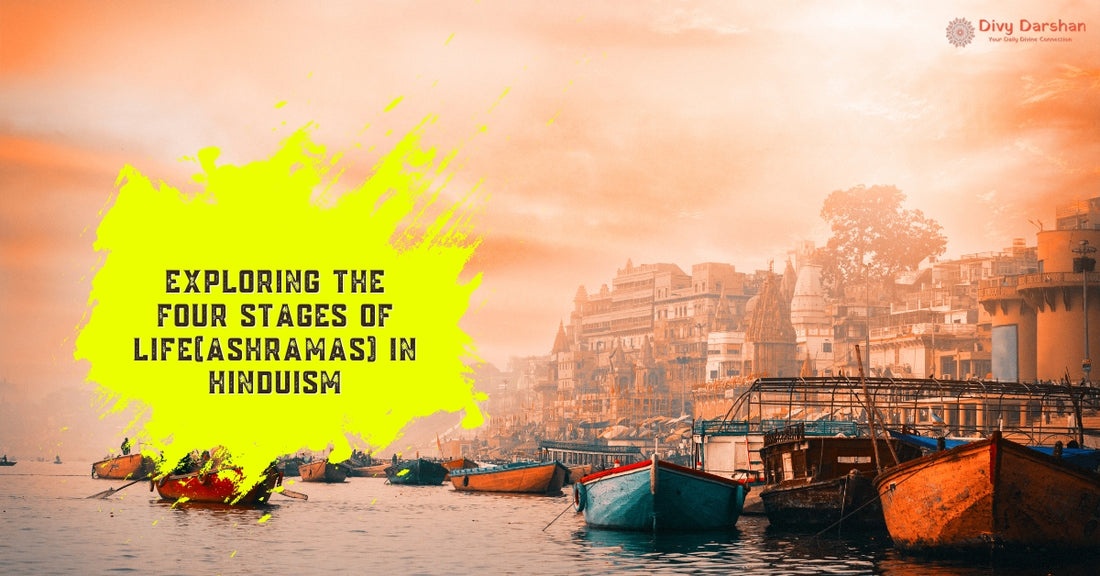Introduction
A wide variety of Hinduism beliefs come to live in the idea of Ashramas, with the four stages of life, which help individuals to fill up their lives with purpose and meaning. Funded by ancient philosophy and insightful spirituality, these stages reflect a holistic method that contains several aspects of human existence. So, let's get started on a trip to discover these stages, each having its specific knowledge and responsibility, in the rich design of the Hinduism beliefs.
Stage 1: Brahmacharya(Student Life)
Embracing Learning and Discipline
The start of life according to Hinduism beliefs is known as Brahmacharya, the stage of student life. This segment is associated with studies, inspiration, and accumulation of knowledge. The youth tend to involve themselves in both worldly and spiritual learning, under the guidance of gurus or teachers. It is a period of learning to live by character, develop your virtues, and build a solid platform for a future full of happiness. The focal point is self-control, celibacy, and a strong morality in this phase.
Stage 2: Grihastha(Householder Life)
Nurture Families and Achieve Duty
When people become adults, they enter the second stage of the lifepath called Grihastha where they take a family or have a domesticated life. This component of a life journey usually involves compliance with worldly obligations and duties such as marriage, raising children, and doing one's job. During the grihastha stage of Hinduism beliefs, the individuals are busy, in fact, they are trying to run a balance between personal and professional life upholding the dharma (righteousness) and good of the society. It's a time of being devoted, contributing, and giving solicitude to one's family and community issues.
Stage 3: Vanaprastha(Forest Dweller Life)
Finding Solitude and Spiritual Reflection
In the course of time, a person is associated with discharging his obligations to parents, wife, and children and retires to the phase of hermit life or Vanaprastha. In this phase of life in accordance with Hinduism beliefs the men and women are gradually disengaging with the affairs of the world where they begin a journey inward which is aimed at reflection and spiritual contemplation. They can decide to go live in a forest or think they would rather leave the city's busy life to mind their spiritual practices, meditations, or self-reflection. Vanaprastha is a period, where the senior person seeks out self-realization, and detachment from earthly things and prepares for the next phase of life.
Stage 4: Sannyasa(Renunciate Life)
Embracing Renunciation and Spiritual Liberation
The last goal of life in Hindus is Sanyas which is the stage of renunciation that leads to the body of a person being purified at the end. Now people cast off all ties and relationships in the material world and instead of these they are concentrating on the sacred path to salvation all the time. Sannyasa ger its definition by monastic life that includes complete detachment from material possessions, contemporary customs, and personal cravings. The way of life renunciates lead is full of simplicity, hardships, and devotions as they move about as mendicants or in monasteries. They do spiritual exercises to reach their perfect connection with God and finally attain freedom from the world.
Conclusion
Hindu Dharma has a holistic view of the soul's journey as it is divided into four stages for a person to engage with the journey of life from youth to old age and to experience spiritual growth that holds the principles of wisdom and purpose. By Believing in Hinduism Beliefs every stage is linked to its specific difficulties, strengths, and final knowledge that resulted in the polytomy of transformation's process toward self-awareness and independence. Thoroughly observing these four virtues of learning, responsibility, inner quest, and renouncement can be a wonderful way to live a joyful life in harmony with the universal truths of Hinduism beliefs.

